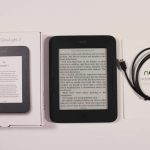A Faraday dry bag backpack is a specialized piece of gear designed to offer dual protection for electronic devices and other sensitive items. It combines the signal-blocking properties of a Faraday cage with the waterproof and element-proof characteristics of a dry bag. This ensures that contents are shielded from electromagnetic interference (EMI), radio frequency interference (RFI), and environmental hazards such as water, dust, and sand.
Core Features and Advantages
- Electromagnetic Shielding: These backpacks incorporate conductive materials that form an enclosure, effectively blocking a wide range of signals. This includes cellular (GSM, CDMA, LTE, 5G), Wi-Fi (2.4GHz & 5GHz), Bluetooth, GPS, RFID, and NFC. This feature prevents unauthorized access, tracking, data skimming, and offers a degree of protection against electromagnetic pulses (EMP).
- Waterproof and Element-Proof Integrity: Constructed from robust, waterproof materials like heavy-duty PVC or TPU-coated nylon, these bags often feature welded seams and a secure roll-top closure system. This design ensures contents remain completely dry even during submersion (to specified depths and durations) and protected from rain, snow, mud, and dust.
- Durability and Robust Construction: Designed for resilience, Faraday dry bags are typically made with abrasion-resistant outer shells, reinforced stress points, and high-quality hardware to withstand demanding conditions and prolonged use.
- Enhanced Security and Privacy: By isolating electronic devices from external networks, these backpacks significantly enhance personal and data security. They prevent remote hacking, data wiping, location tracking, and eavesdropping, ensuring digital privacy.
- Portability and Ergonomics: The backpack design allows for convenient and comfortable transportation of equipment, often featuring padded shoulder straps, back panels, and sometimes sternum or waist straps for better load distribution.
Primary Applications
- Digital Privacy and Security: For individuals and professionals needing to protect sensitive data on laptops, tablets, smartphones, and other electronic devices from unauthorized access or surveillance.
- Emergency Preparedness: An essential component of "bug-out" bags or emergency kits to safeguard critical electronics from EMPs, solar flares, or environmental damage during disasters.
- Secure Travel and Commuting: Ideal for protecting devices from data theft or tracking in public spaces, airports, or during international travel where security risks may be higher.
- Outdoor and Marine Activities: Provides crucial protection for electronics during activities such as boating, kayaking, hiking, or expeditions where exposure to water and the need for signal silence are prevalent.
- Forensics and Secure Evidence Handling: Used by law enforcement, military, and digital forensics investigators to transport seized electronic devices, preventing remote data alteration or wiping.
Key Selection Criteria
- Shielding Effectiveness: Assess the stated signal attenuation levels, usually measured in decibels (dB), across different frequency ranges. Higher dB values indicate superior blocking capabilities. Look for multi-layered shielding construction.
- Waterproof Rating: Verify the Ingress Protection (IP) rating (e.g., IPX7 for submersion up to 1 meter for 30 minutes, IPX8 for continuous submersion beyond 1 meter) or other specific waterproof claims. The integrity of the closure system is paramount.
- Material Quality and Durability: Consider the type and thickness of the materials used (e.g., high-denier nylon, robust PVC), the quality of seam welding or sealing, and the overall construction for long-term reliability.
- Capacity and Design: Choose a size appropriate for the devices and gear you intend to carry. Internal organization, such as padded sleeves or compartments, can be beneficial for protecting delicate electronics.
- Closure System: Ensure the bag features a secure and reliable closure mechanism for both Faraday shielding (often involving multiple folds and secure seals) and waterproofing (typically a roll-top with buckles).
- Comfort and Ergonomics: For backpack versions, evaluate the design of shoulder straps, back panel ventilation, and the availability of adjustable sternum and hip belts for comfortable carrying, especially with heavier loads.












